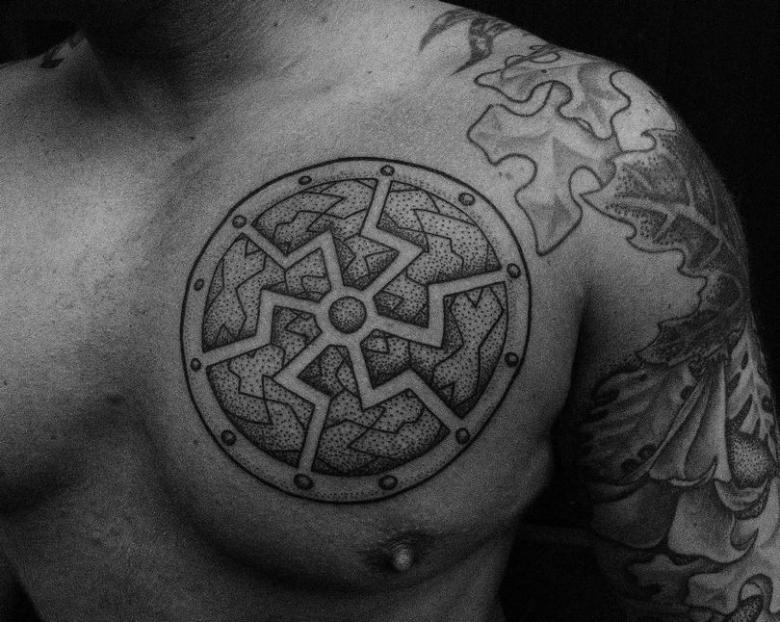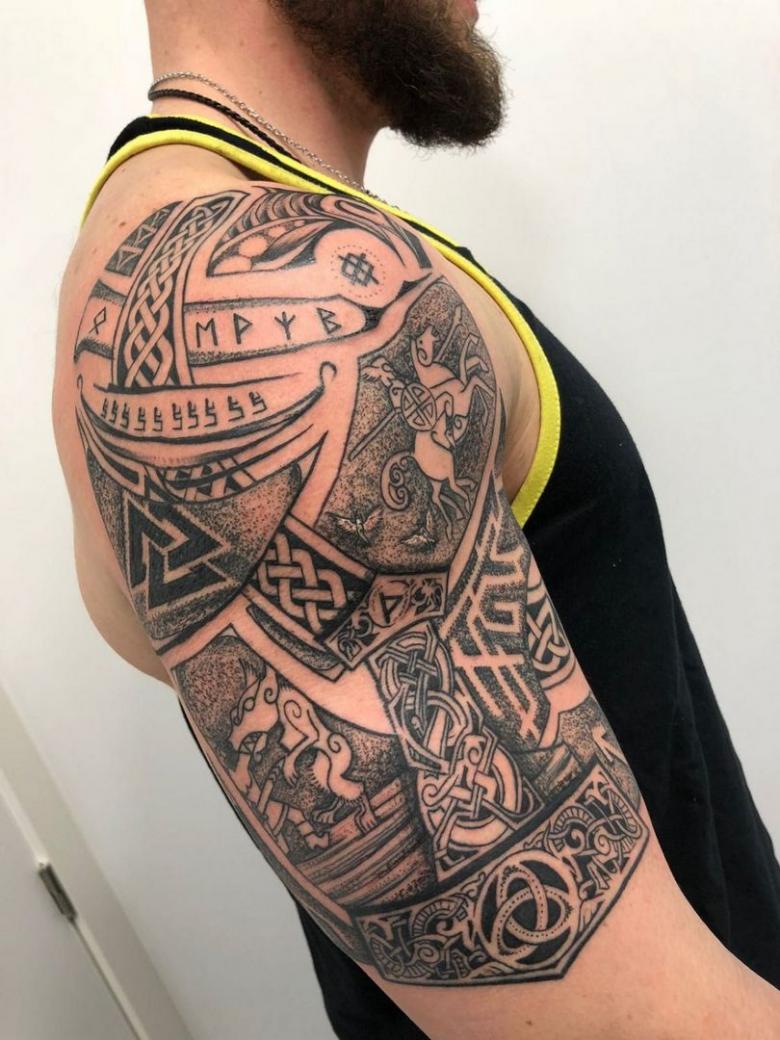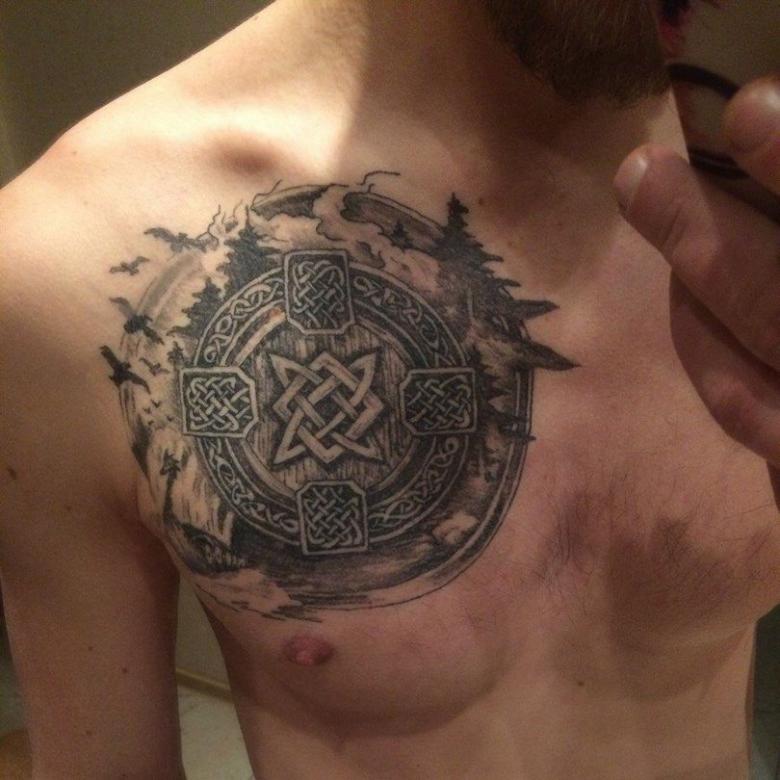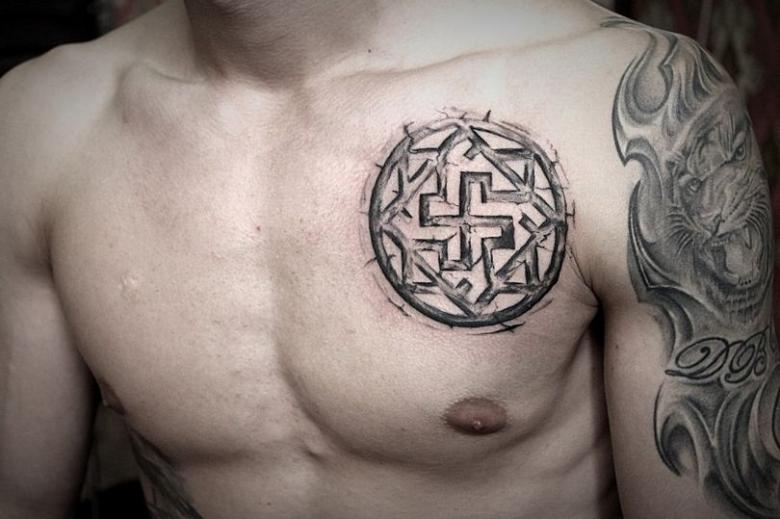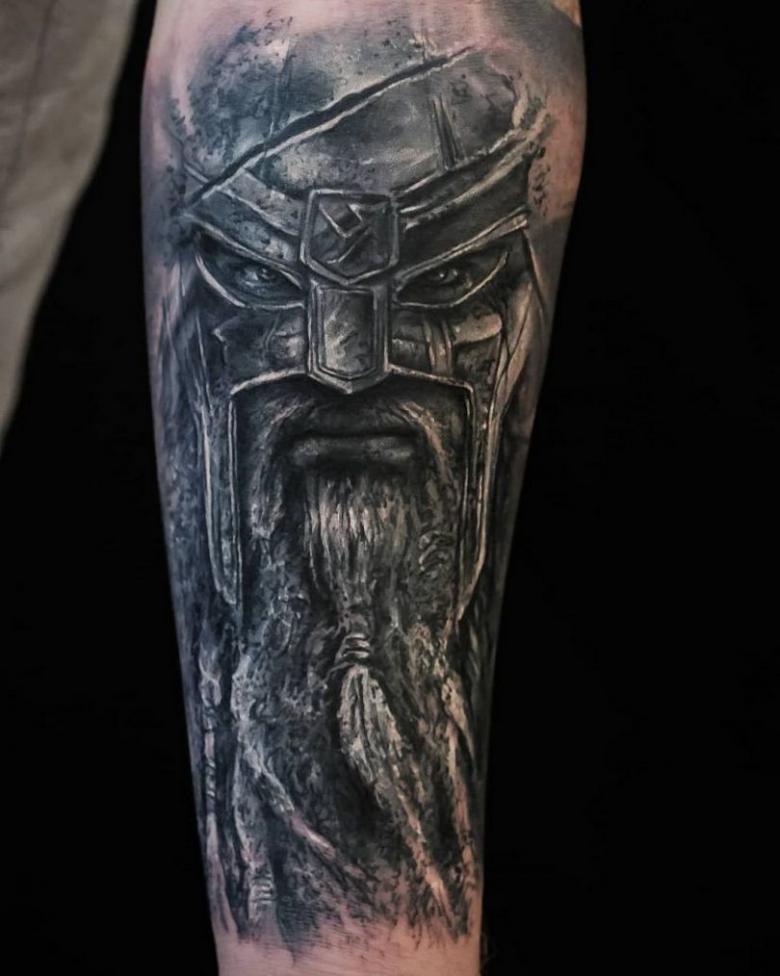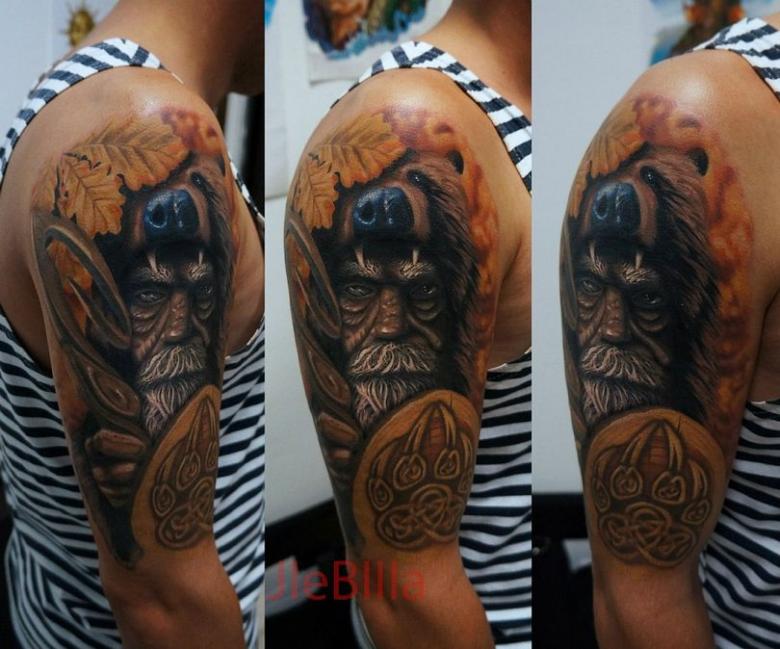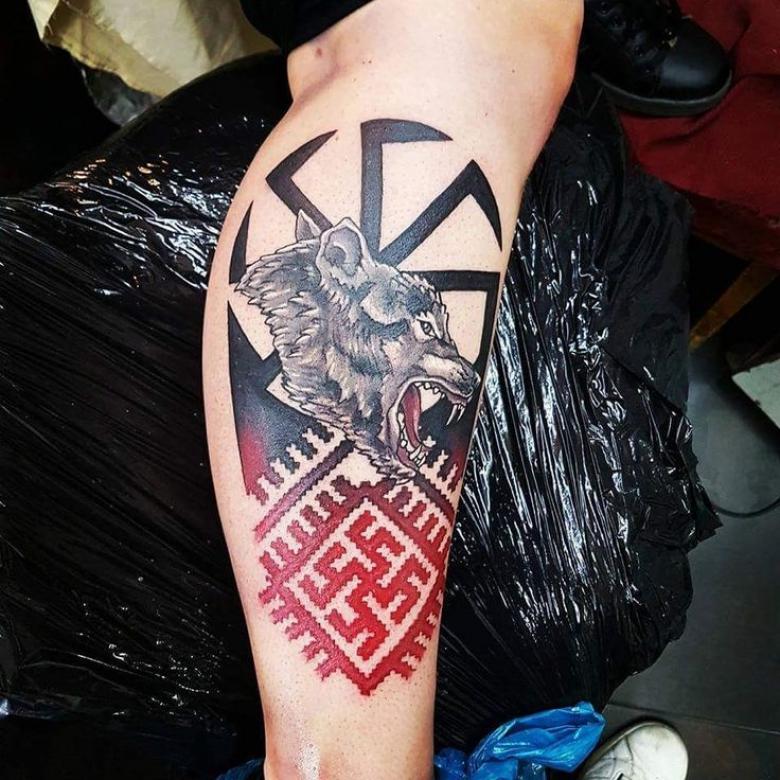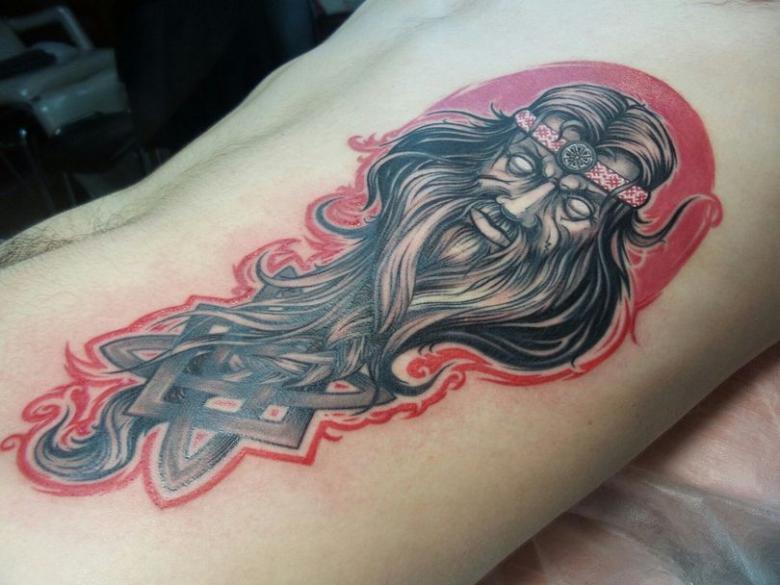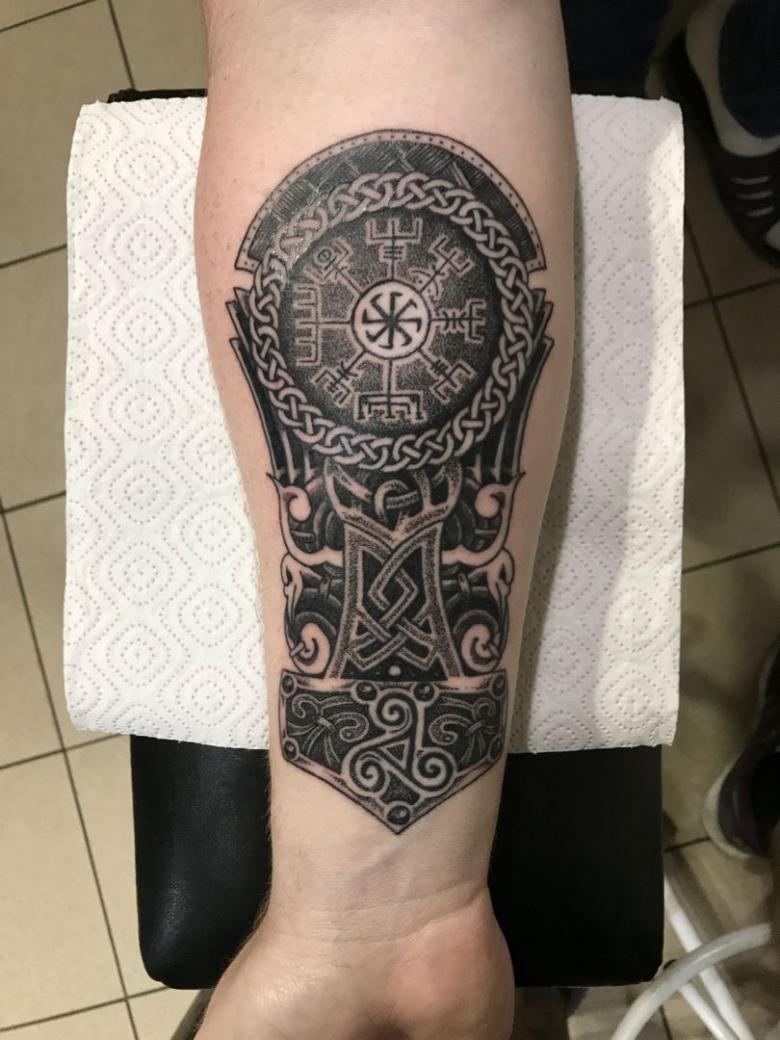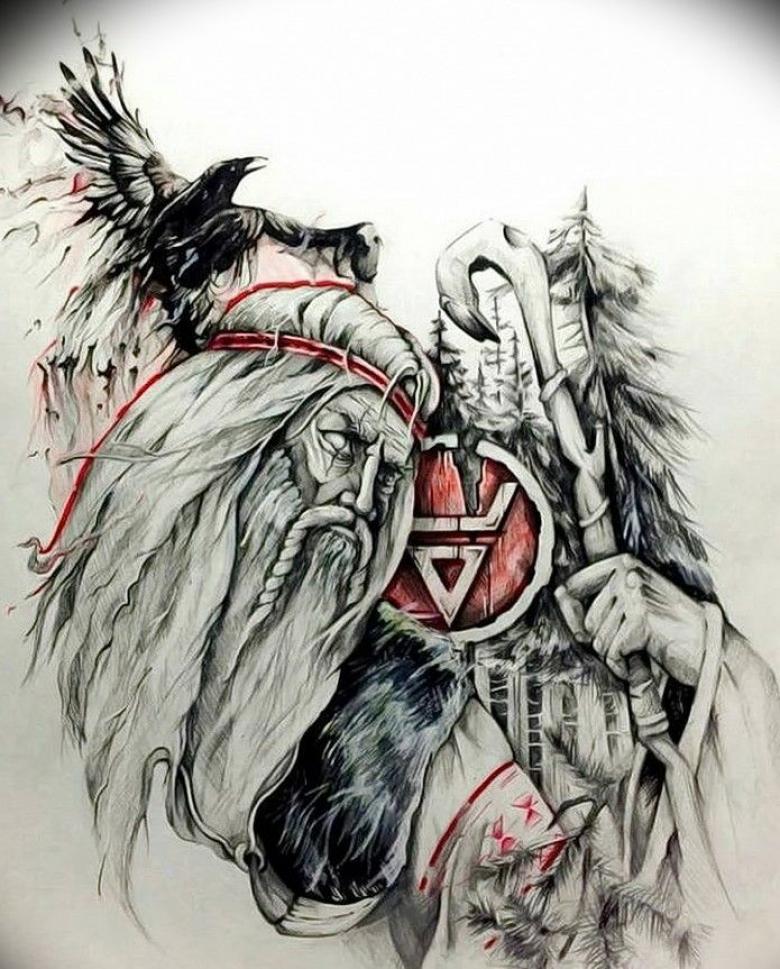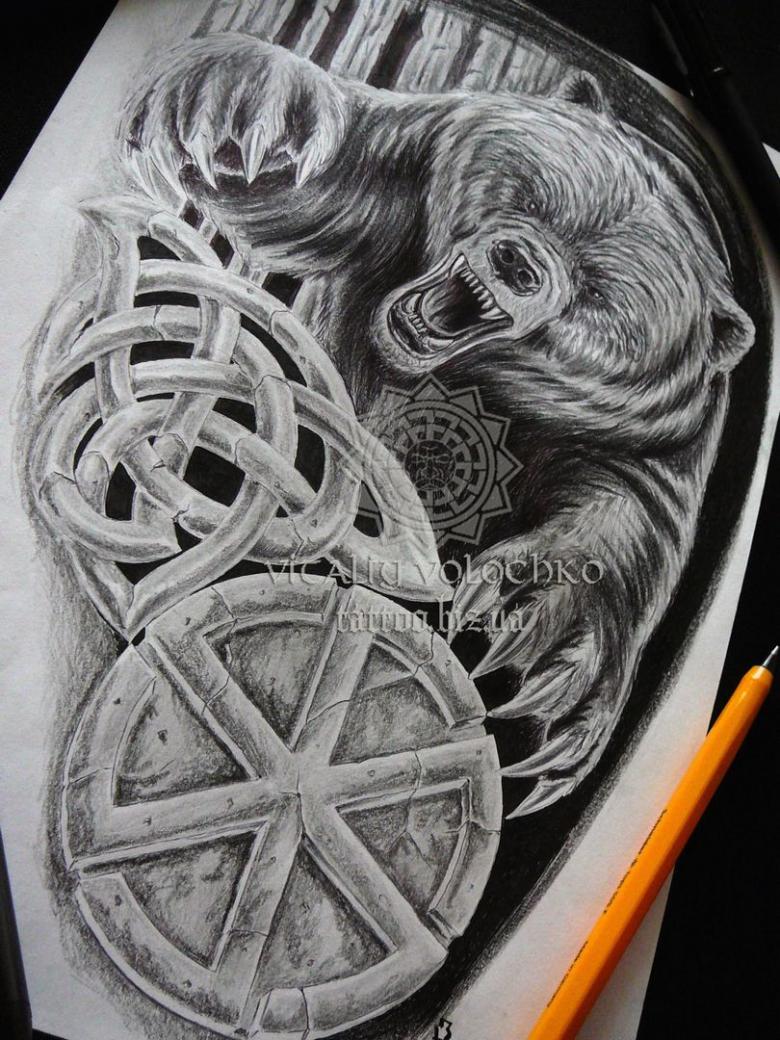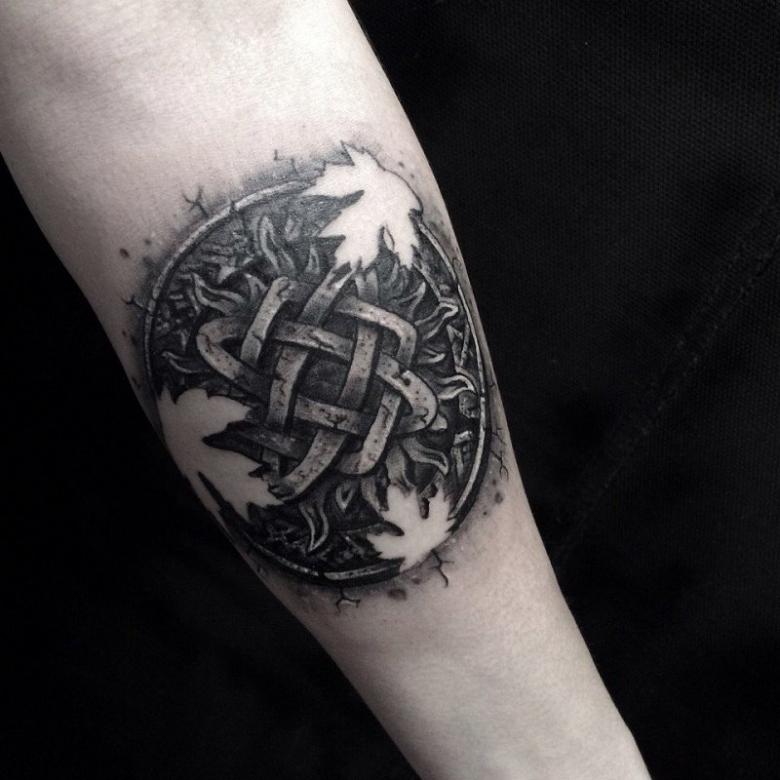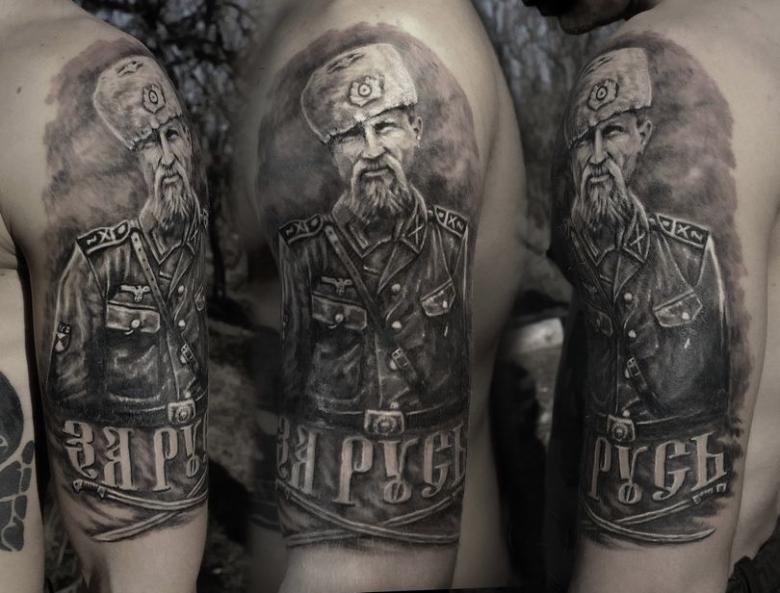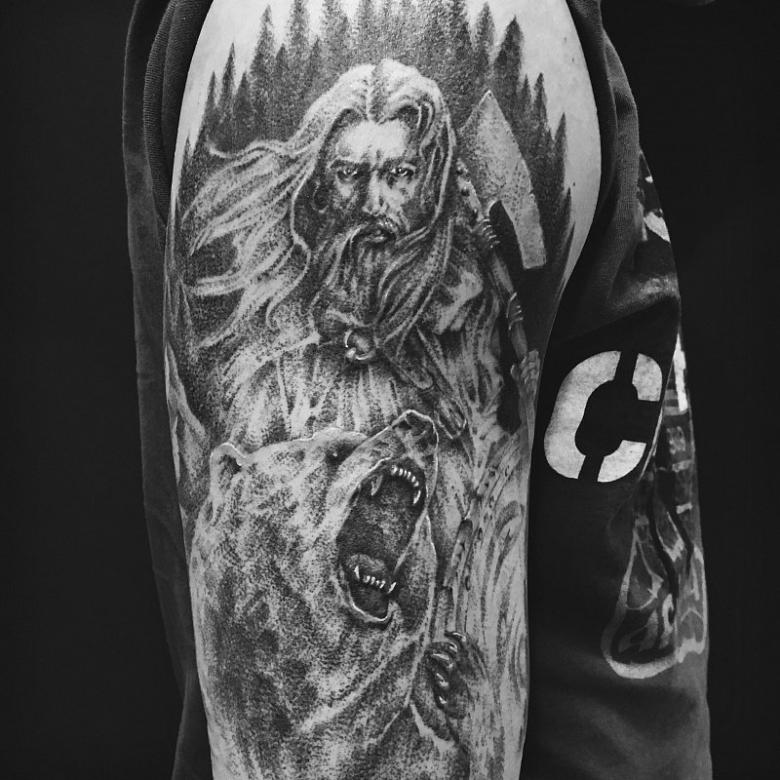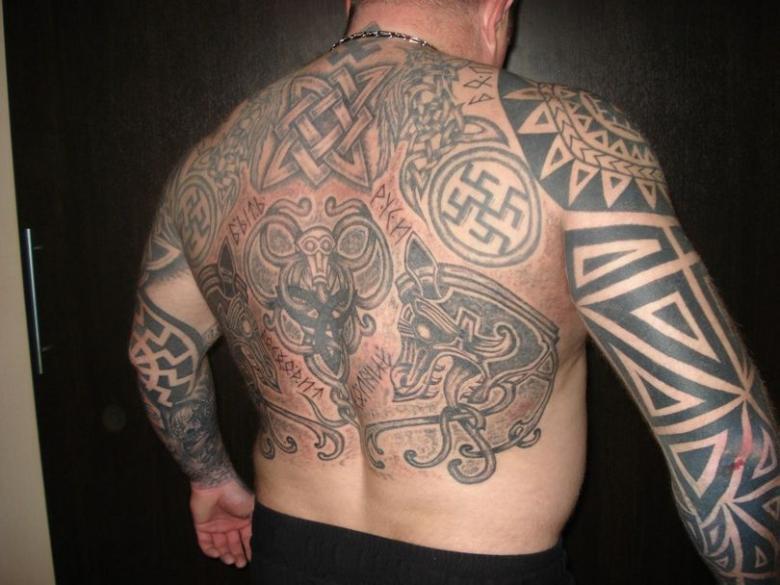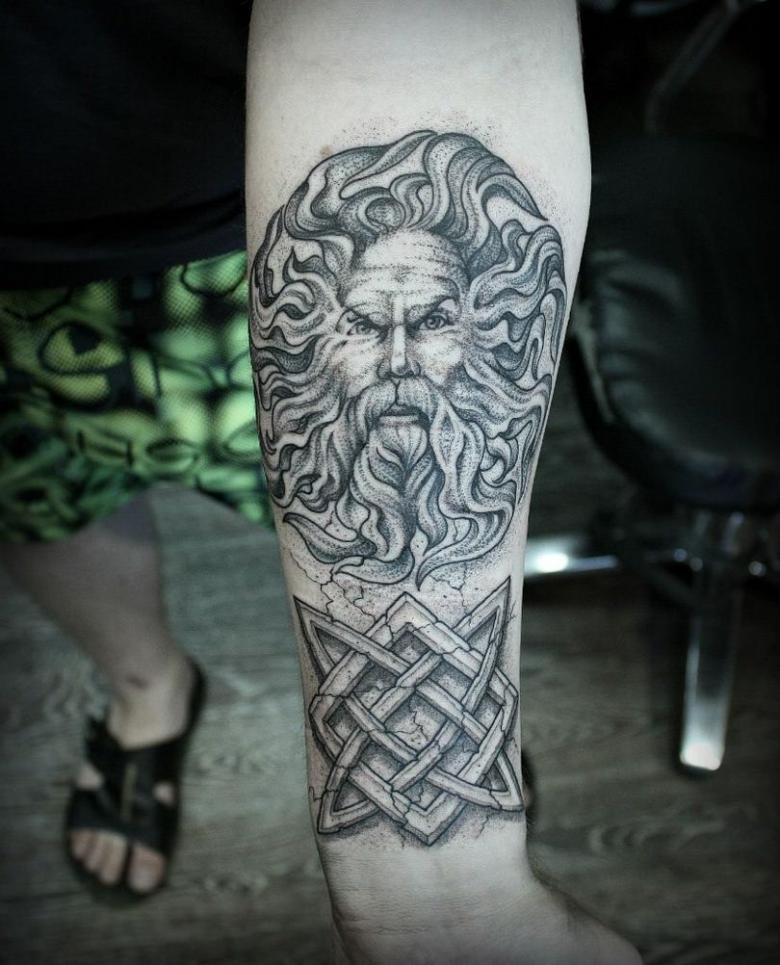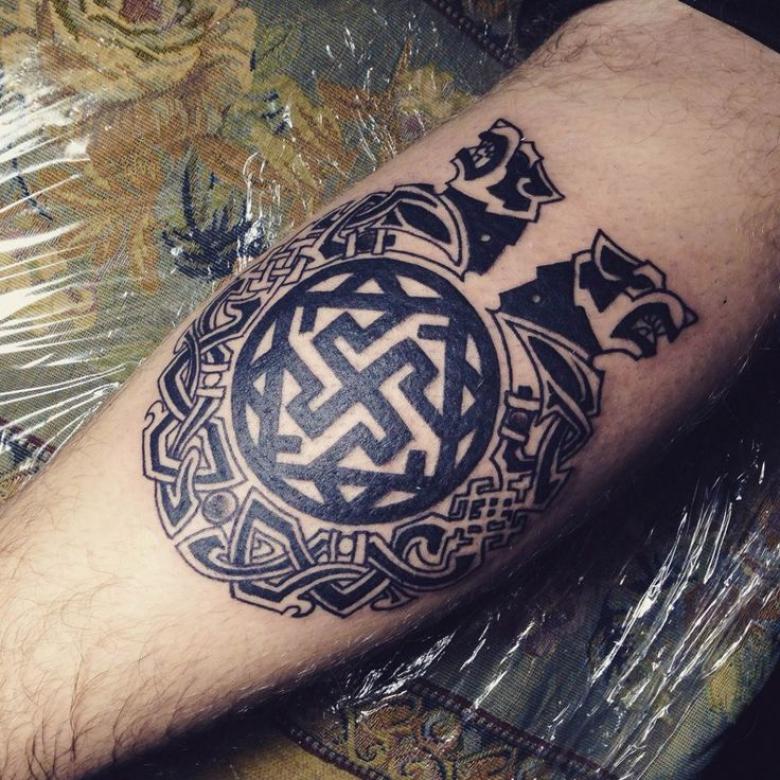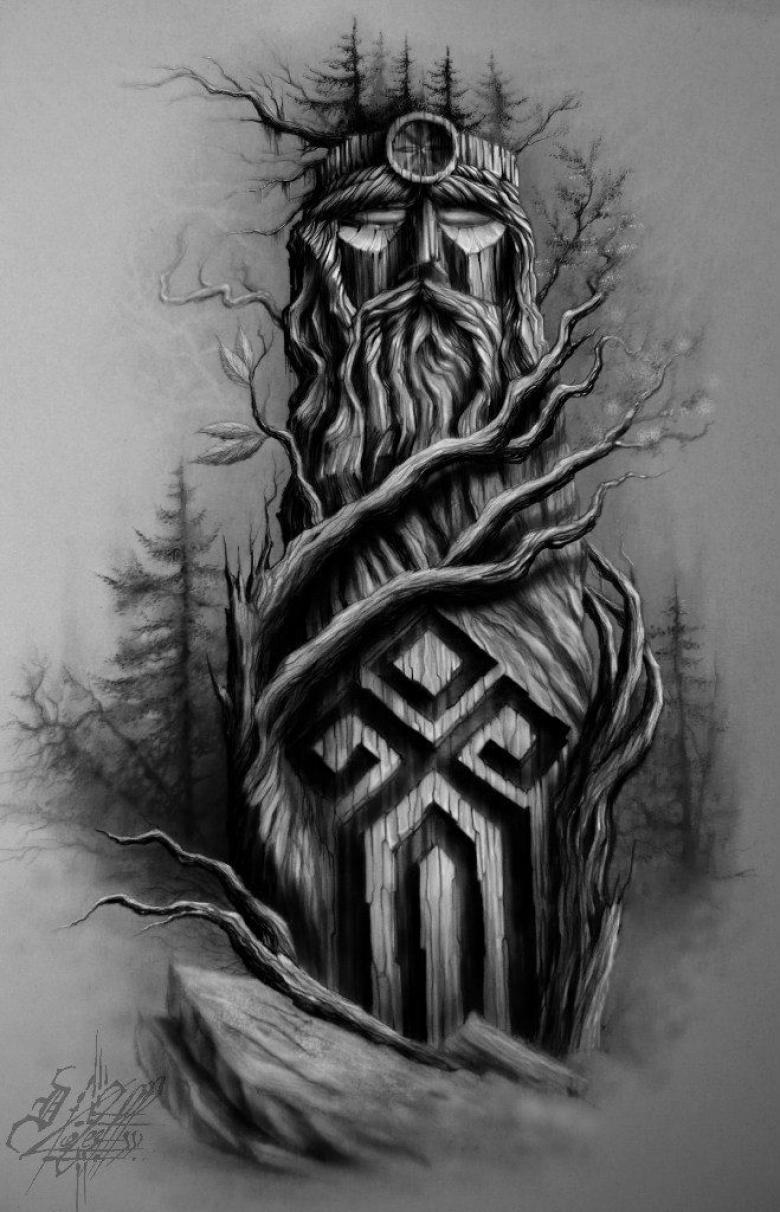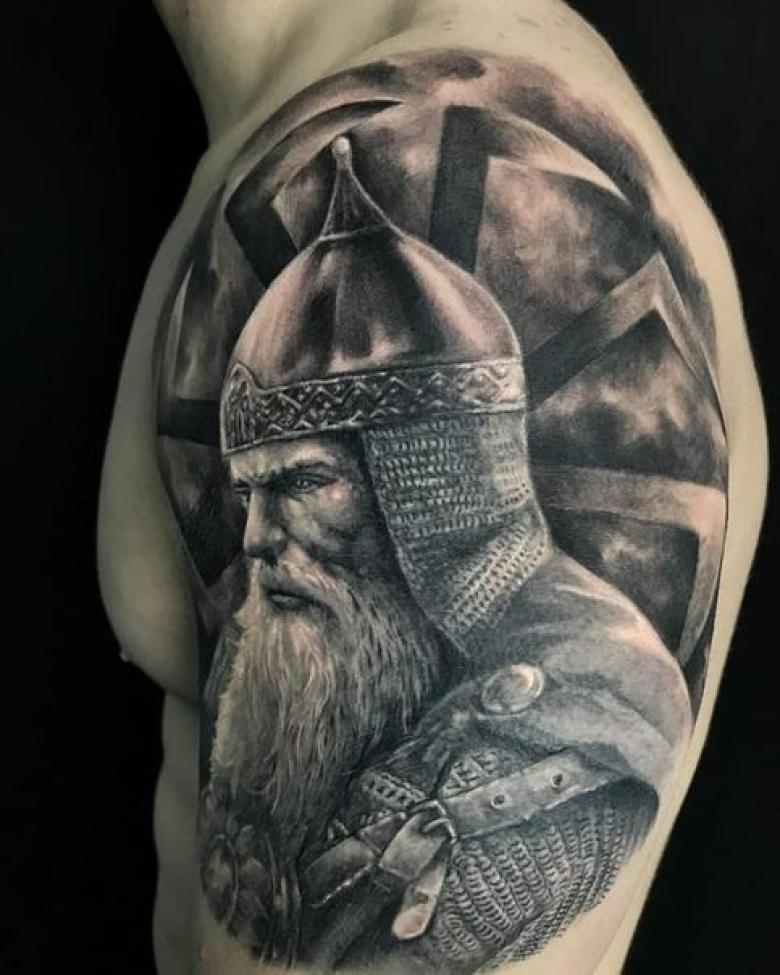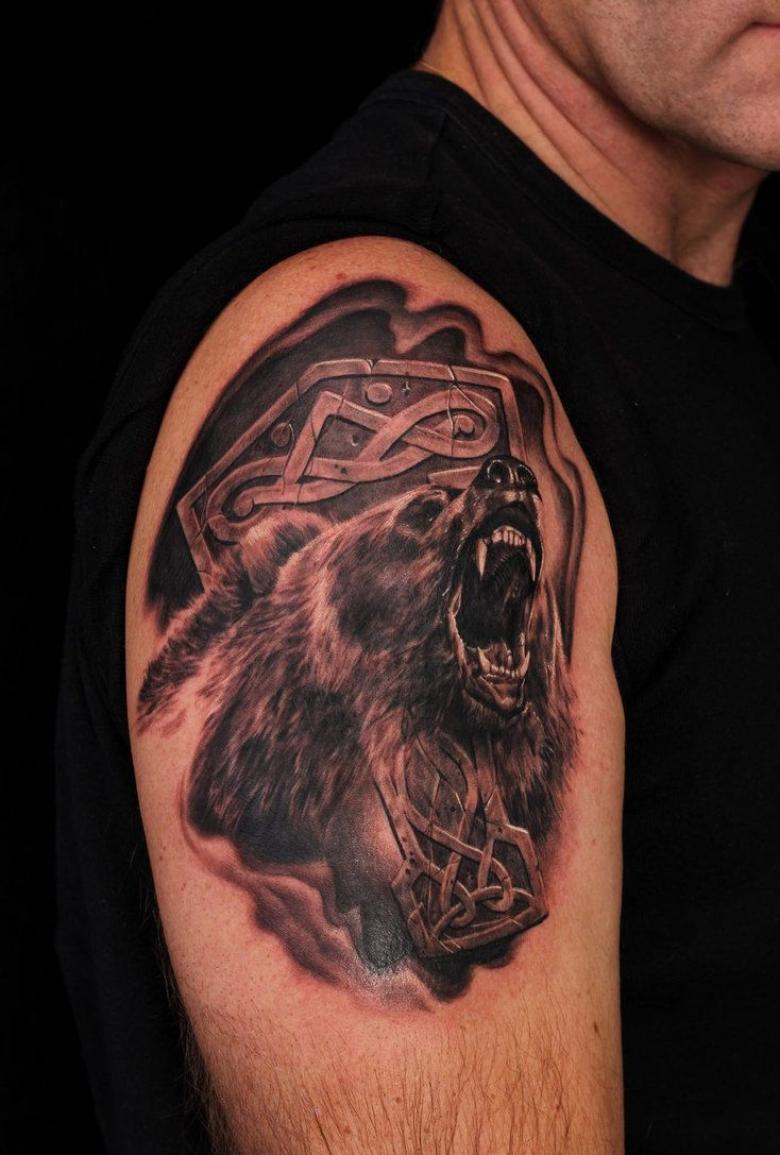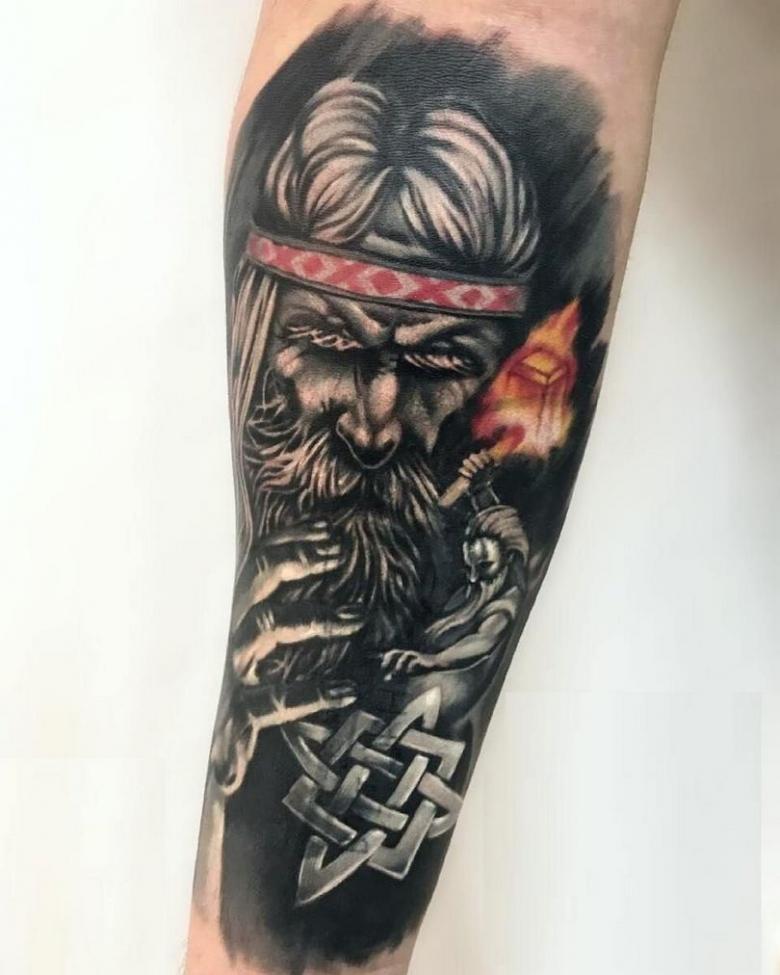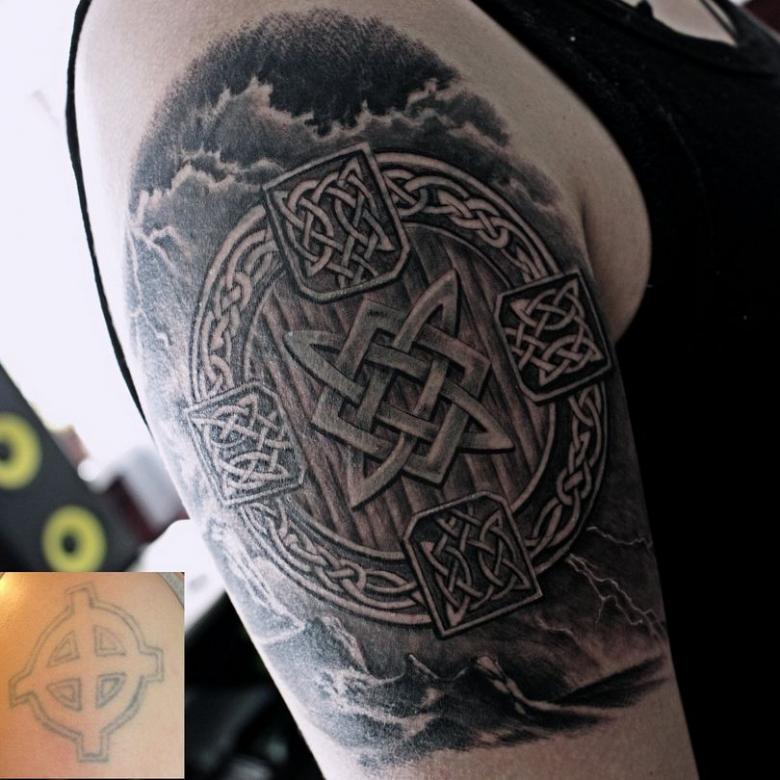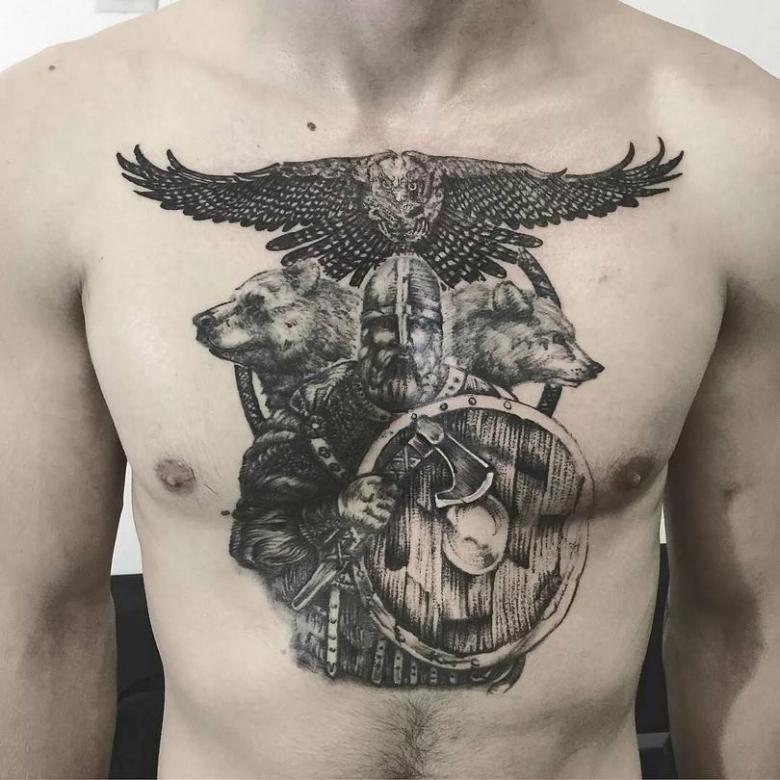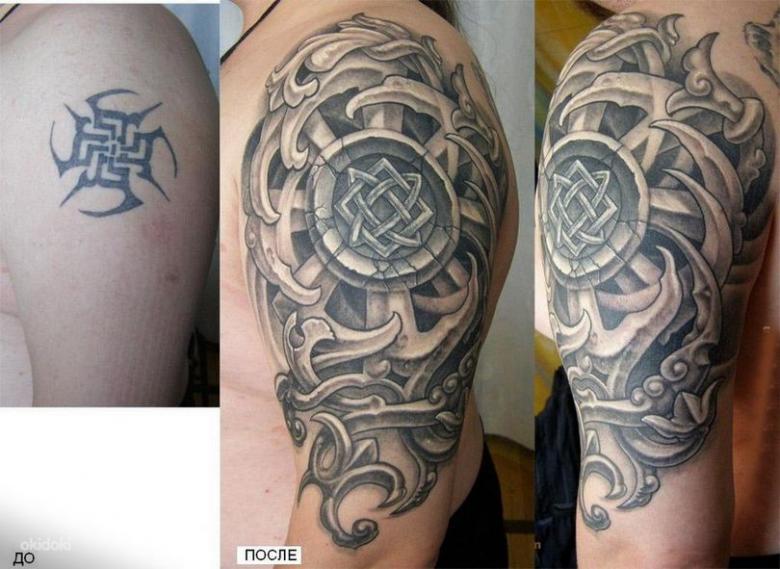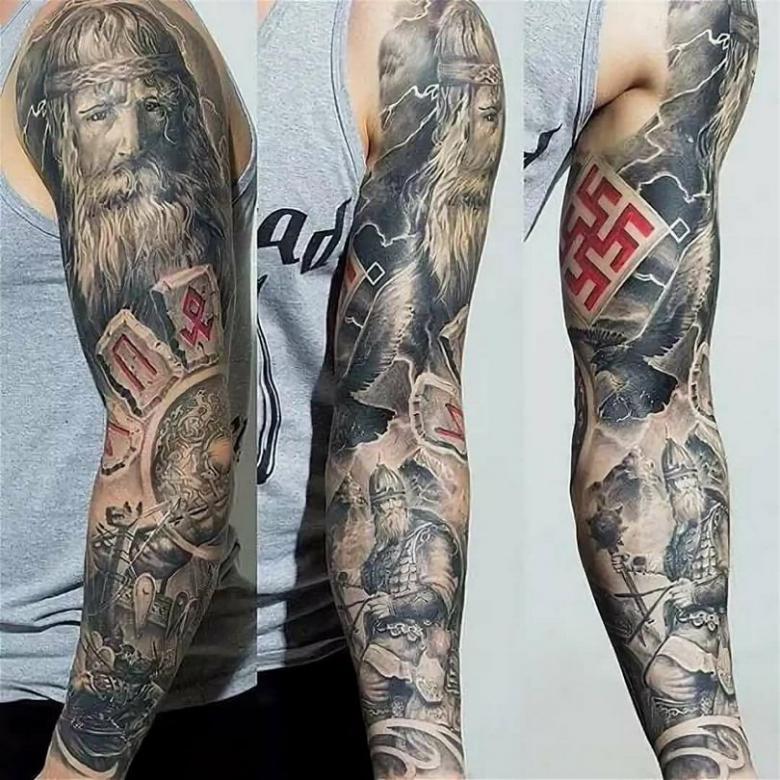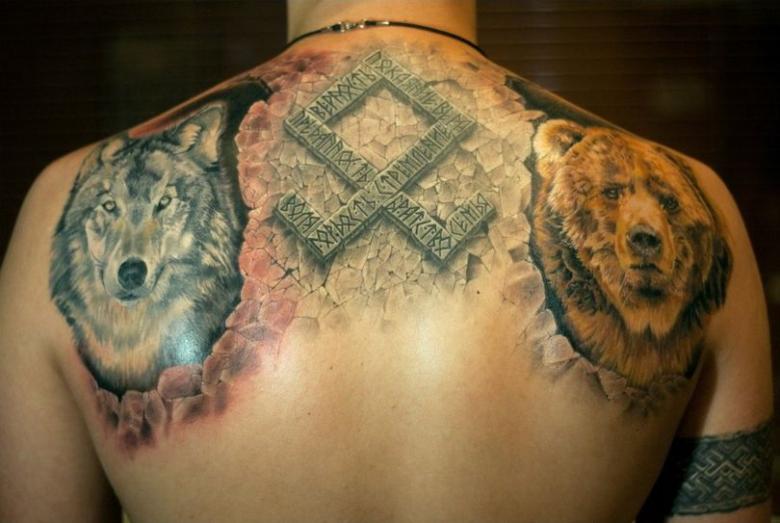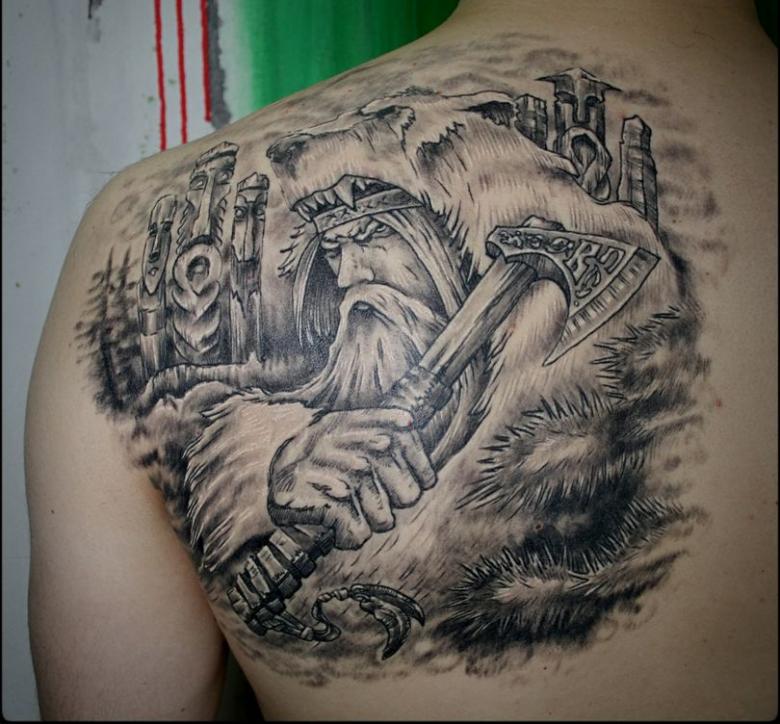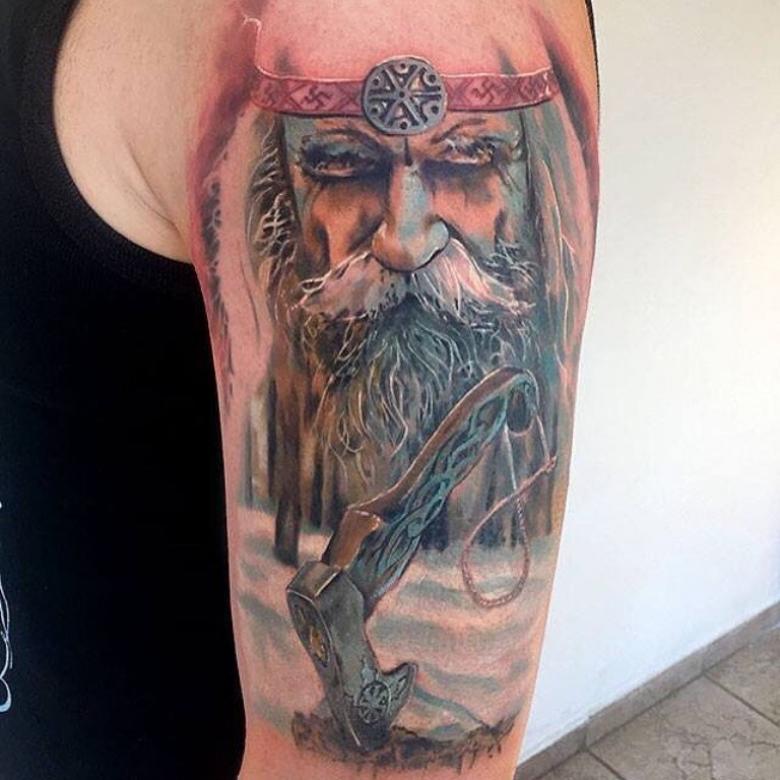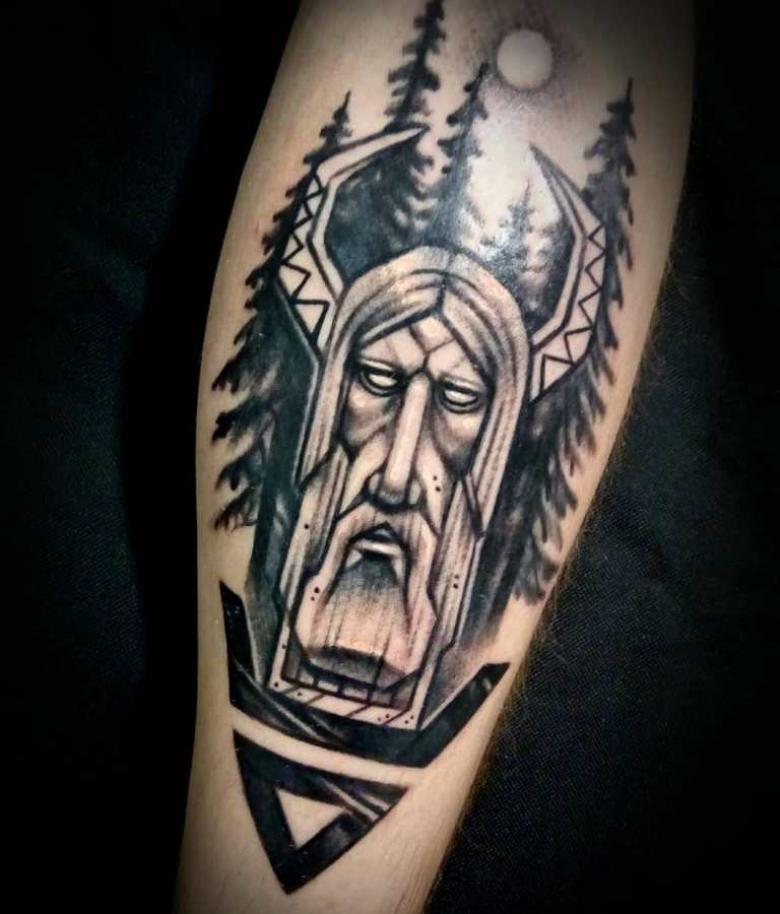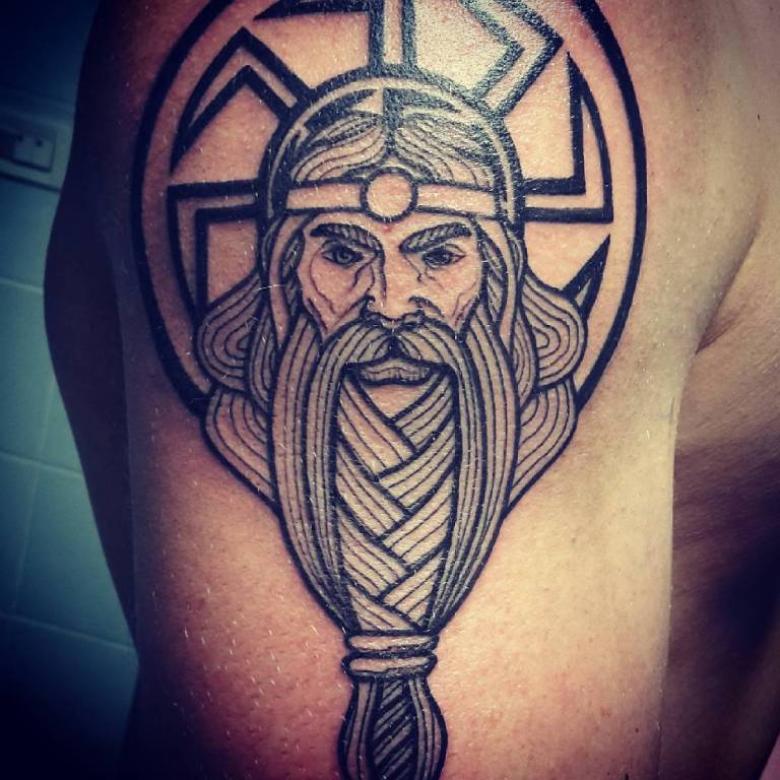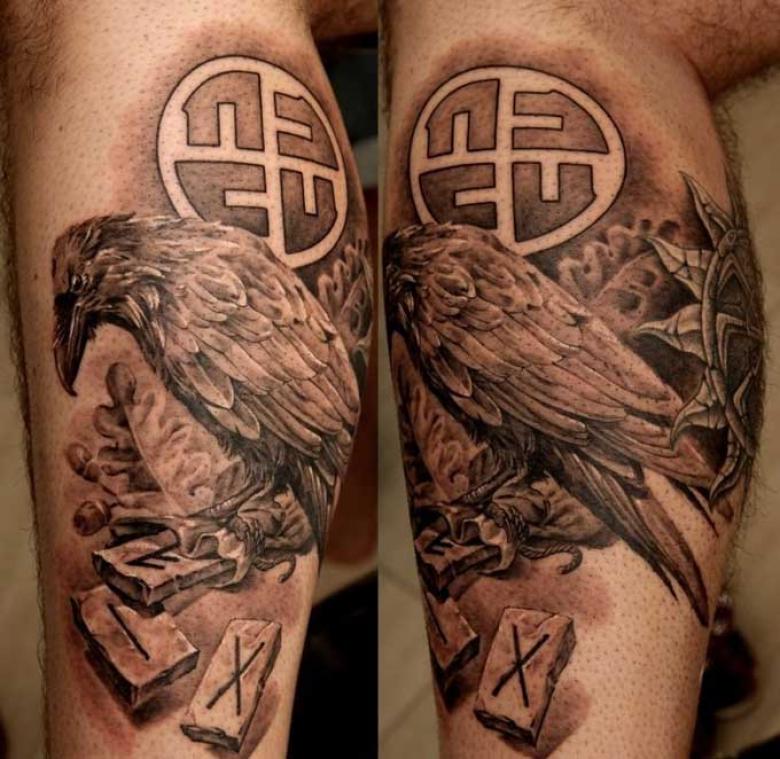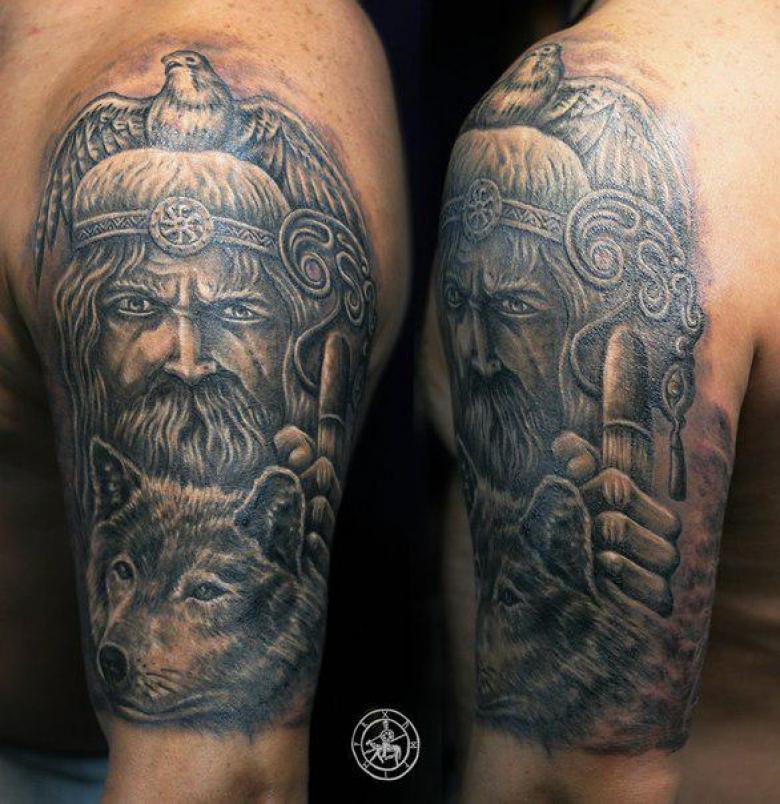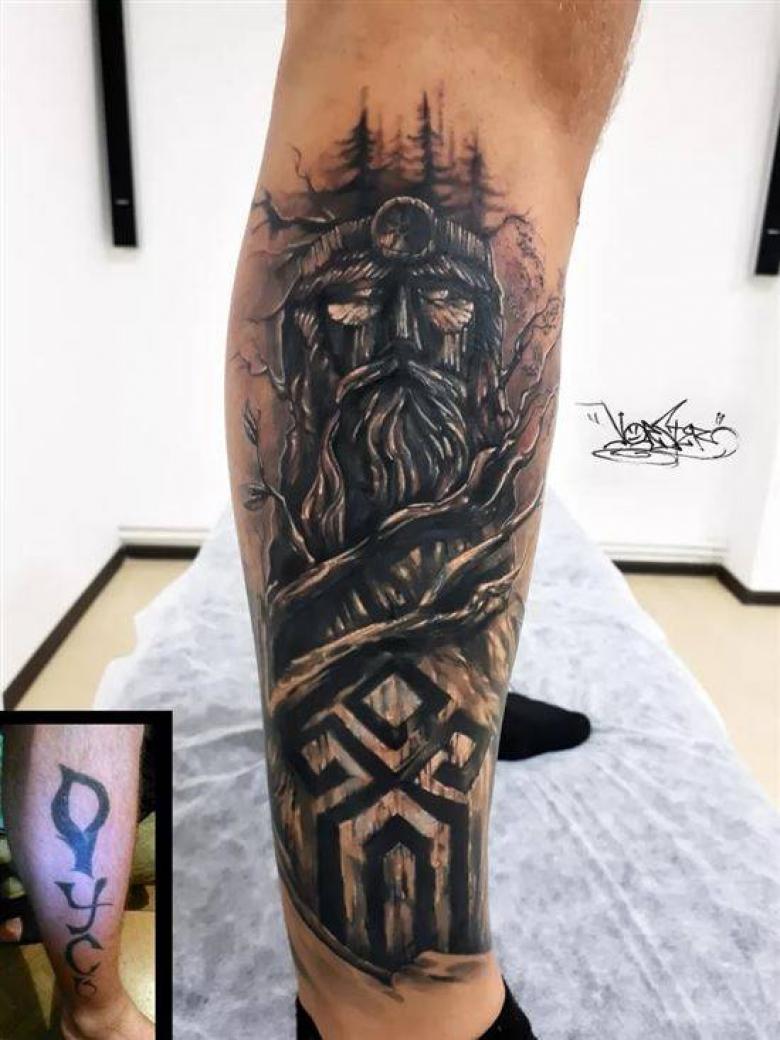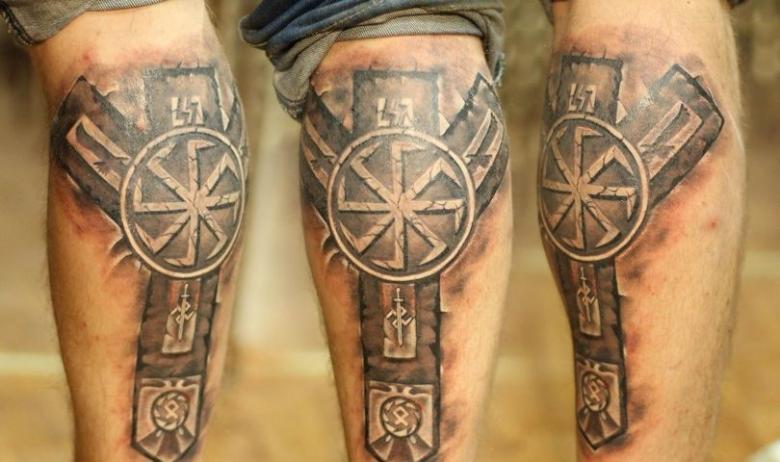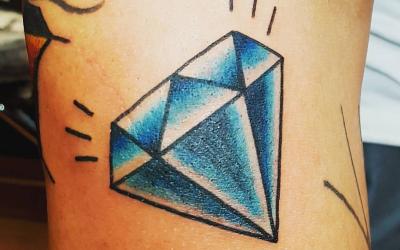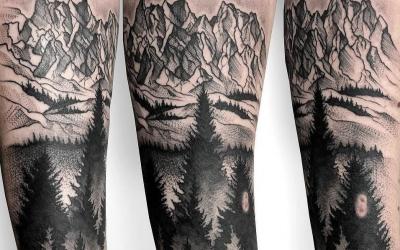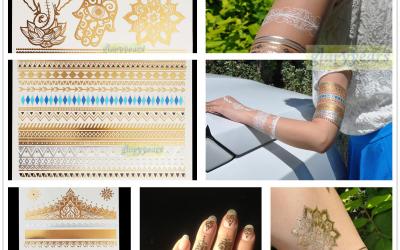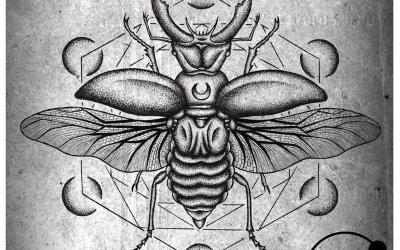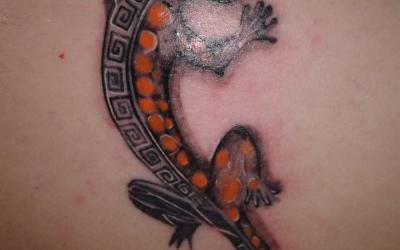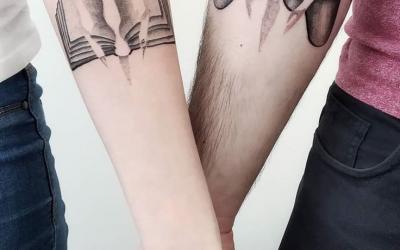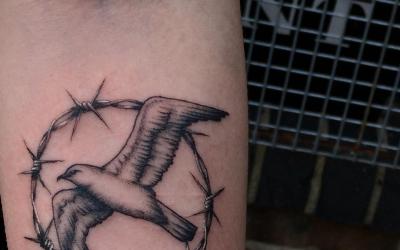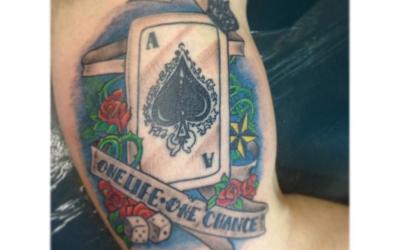Slavic tattoos - amulets and runes, sketches for men and women, places of application (on the shoulder, arm, as a sleeve), photos of works
Tattoo - a popular way to emphasize your own individuality, characterized by a large selection of drawings. Among fans of ethnic motifs are especially popular Slavic tattoos.

The art of tattooing goes back to the depths of history. Most of the Slavic tribes widely used various body drawings and gave them sacred and religious meaning. In the modern world, this direction of decorating your own body has not lost its popularity, although the sacred and esoteric meaning of ancient patterns has gone into the background.
History of the development of Slavic tattoos
On the most ancient stages of development of the Slavic tattoo art little is known. Reliably it was established only that the body art was widespread among both men and women and reflected the beliefs of the people of that time. According to them, with the help of tattoos it was possible to protect yourself from machinations of "dark forces" and become stronger and more enduring.
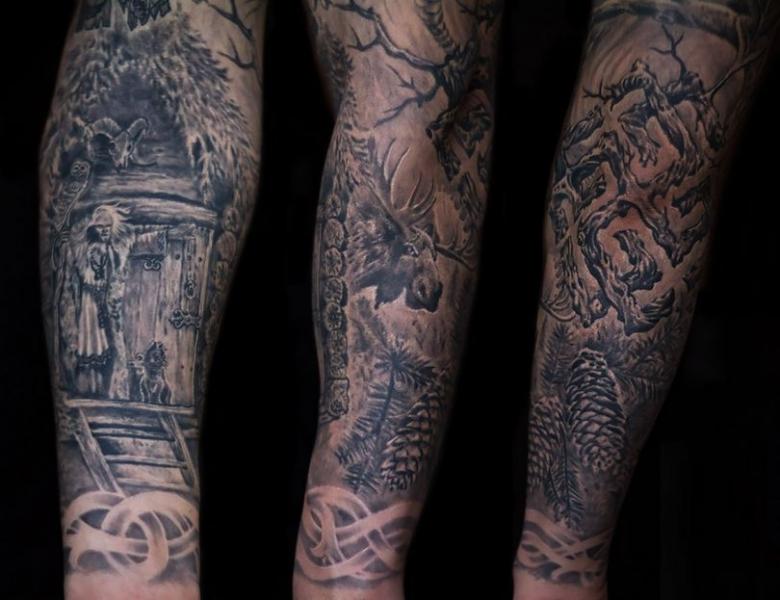
The main distinction of traditional Slavic drawings was the belief that they could not be applied before the age of 33. It was believed that in this period the main processes of physical body development that could be distorted by tattoos were completed.
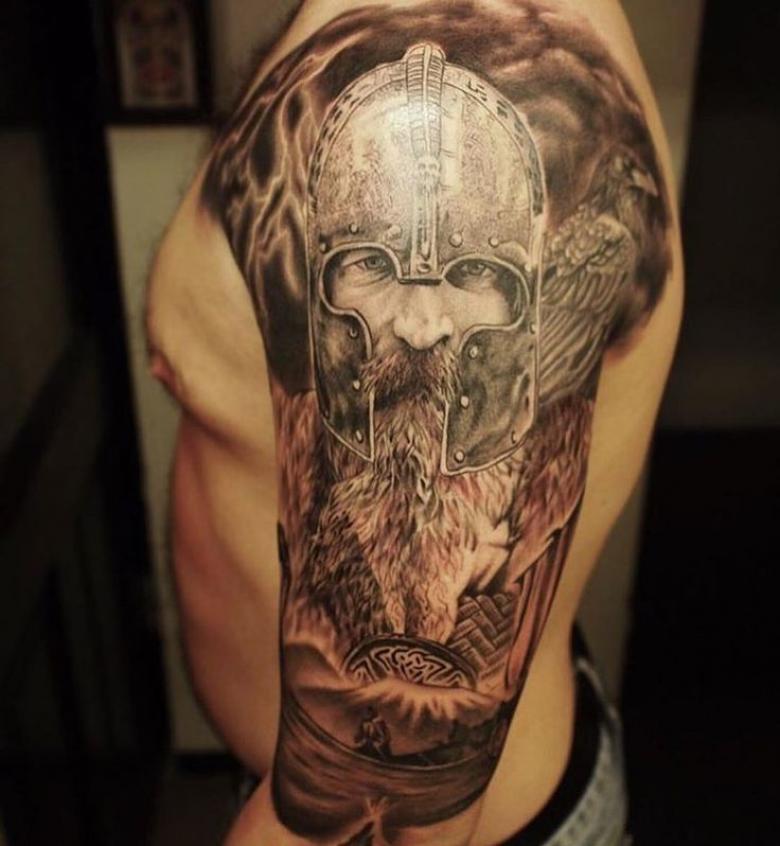
With the advent of Christianity drawing on the body was completely prohibited, but in recent years, largely due to the weakening of the church, there came a real renaissance of this ancient art of decorating your own body.
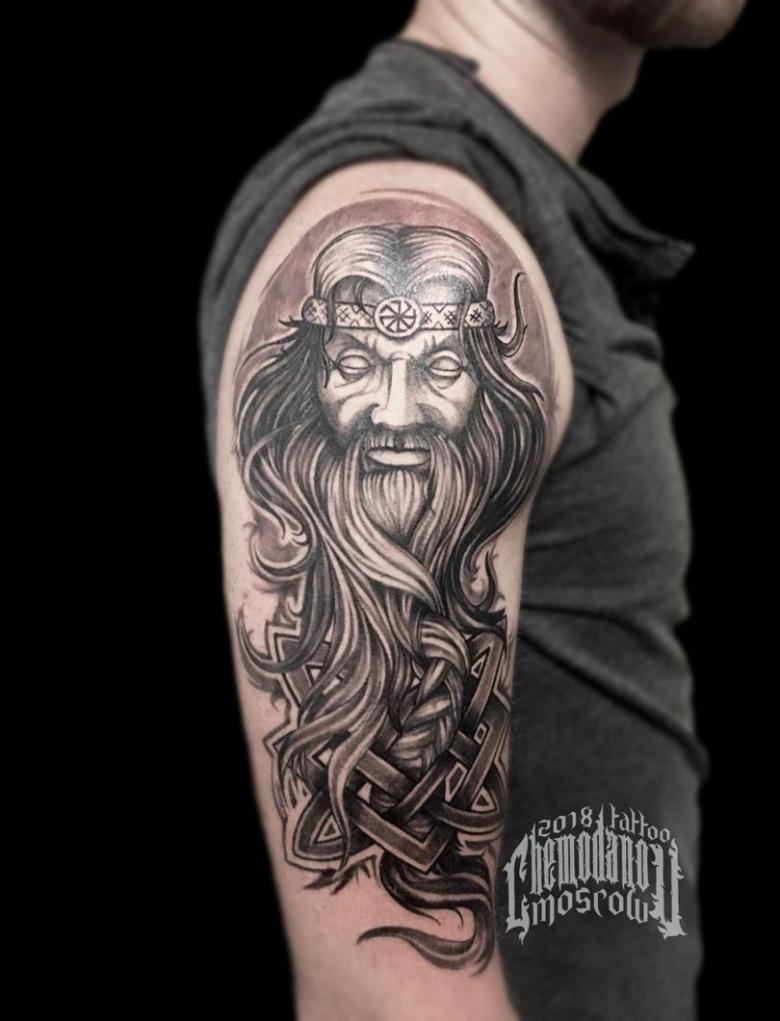
Varieties and meaning of Slavic tattoos
In this direction of tattooing used a variety of different signs, designs and patterns that carry deep meaning, distinguished by beauty and aesthetics.
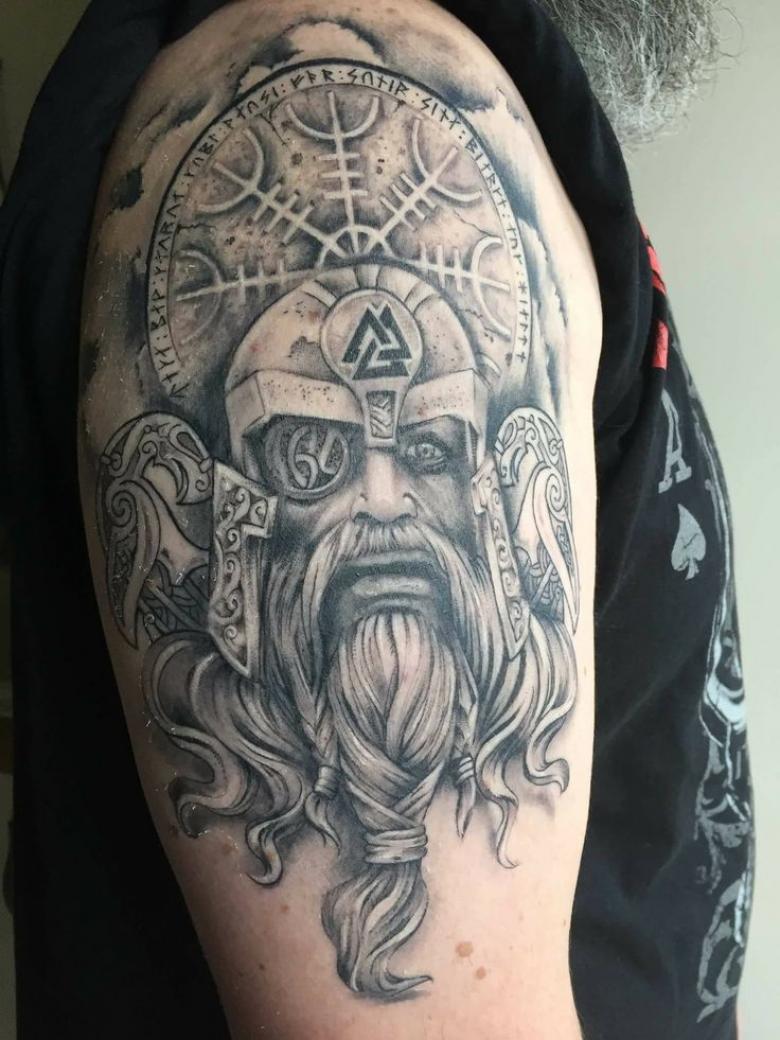
Signs - amulets.
This is a special characters, often quite complicated, whose main purpose - to protect the bearer, or to attract in his life, success and good luck. Among the most popular are:
- Sign of Veles. This is a symbol of God the protector of nature, the patron of secret knowledge. According to popular beliefs, it brings prosperity and good luck.
- A thunderer. One of the variants of the solar symbol, responsible for self-confidence, a purely masculine sign.
- Thunderer. Main function - dispersion of evil thoughts and directed at the carrier, protection from spoilage and the evil eye.
- Caroler. Another popular variant of the male solar symbol, according to legends gives wisdom and good luck in battle.

Gods of the Slavic pantheon
Slavic pantheon of pagan gods was in many ways similar to the Scandinavian, the main gods were Rod - creator of the world and Perun - lord of lightning. It is their image is most often used for tattooing.

No less popular and other gods, such as Yarilo, Khors, each of them was responsible for certain natural processes.

Slavic runes
Initially they were used for writing, later at the forefront of their sacred meaning. Scientists believe that earlier the number of runes used was more, but only eighteen have survived until our time.
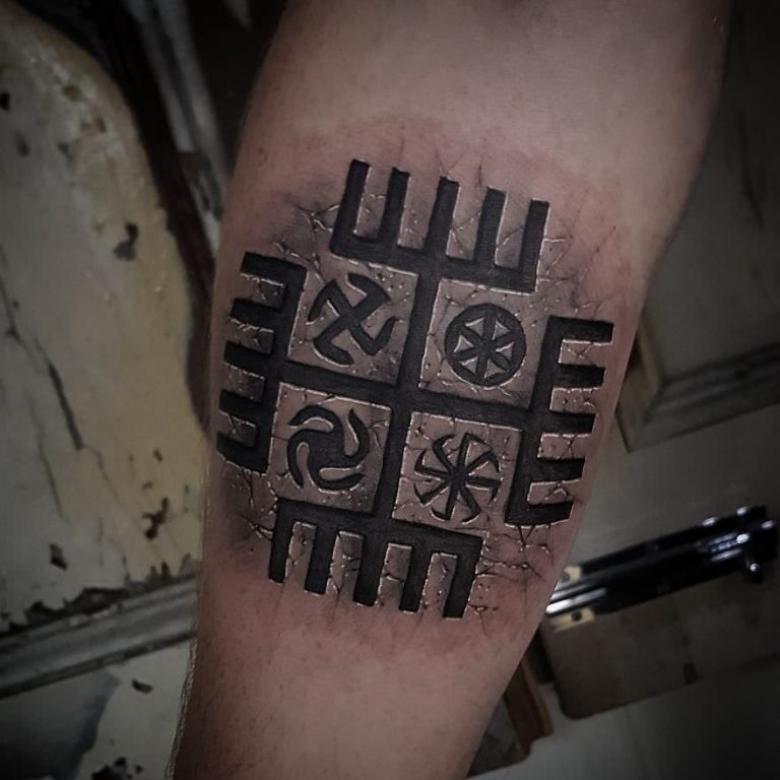
Apply the runes in the form of a tattoo can be individual or by making a complex composition. The main thing in this case - the right to choose the meaning of these symbols. It is believed that the wrong choice of runic tattoo can bring many negative phenomena into the life of the wearer.

Images of animals and their sacred meaning
As in other ancient religions, in Slavic paganism animals played a prominent role. Their images were applied to obtain those qualities symbolized by the animal. The most popular are:
- Wolf. A symbol of strength and valor, one of the most powerful animal symbols with deep esoteric meaning.
- Bear Reflects the power and fertility. It is considered a direct embodiment of Veles, who rules the nature and its wealth of the god.
- Fox. Symbolizes worldly wisdom, according to ancient beliefs, the image of a fox brought prosperity in family affairs.
- A lance is a symbol of the wisdom of life and the wisdom of the fox. One of the main military tattoos, a symbol of invincibility and fierce spirit.
- Crow. A symbol of wisdom and secret knowledge, the patroness of magical practices.
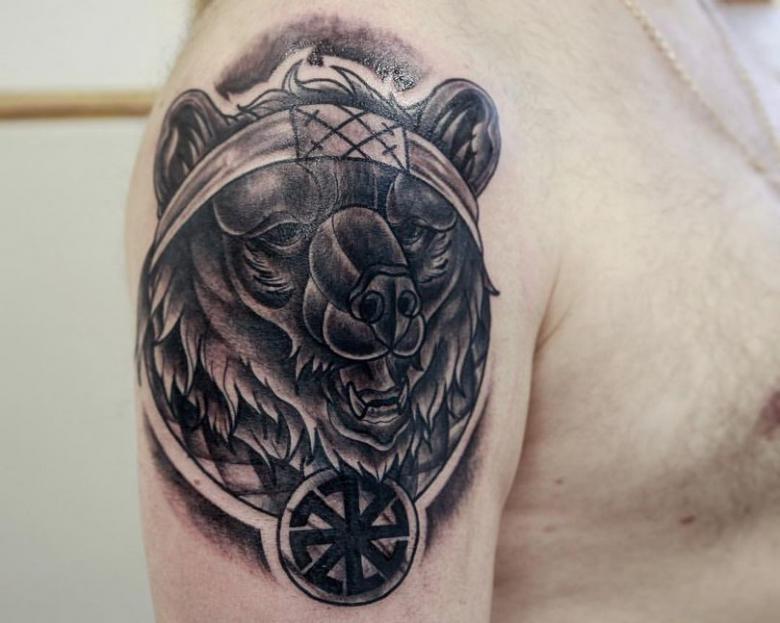
Slavic male tattoos
For men's tattoos Slavs traditionally chose dark colors (black and gray). Usually portrayed gods - symbols of strength and valor, such as Perun or Veles. Often with a tattoo of the gods were combined various runes inscriptions.
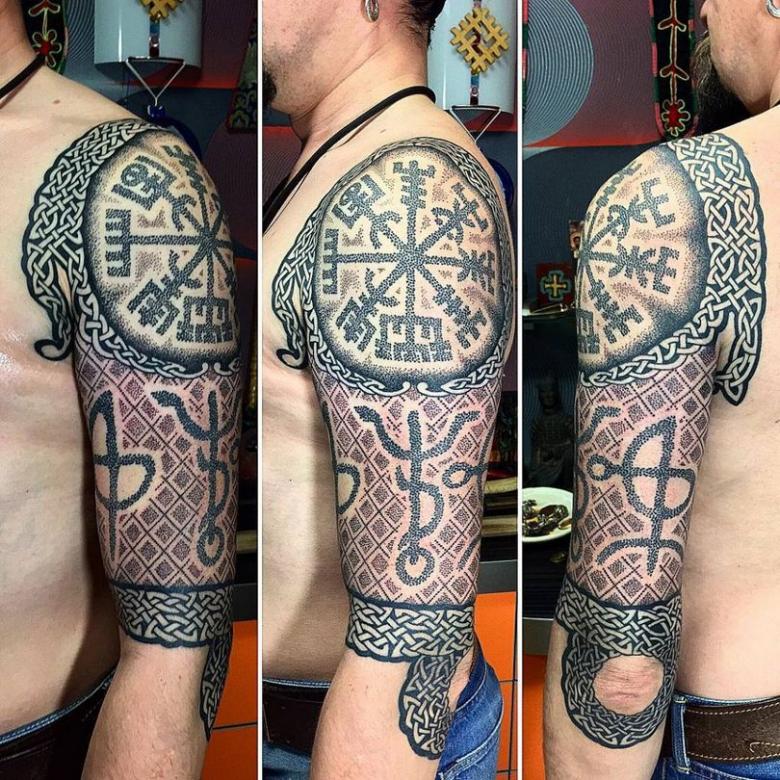
Female tattoos
For Slavic women were characterized by tattoos in the form of various complex ornaments, amulets, images of animals. The main purpose of such natal drawings was to protect the wearer and her family home.

Of the images of gods for women, Dazhdbog, who is responsible for the welfare in family matters, is well suited. The most popular animal is the doe, a symbol of grace and femininity.
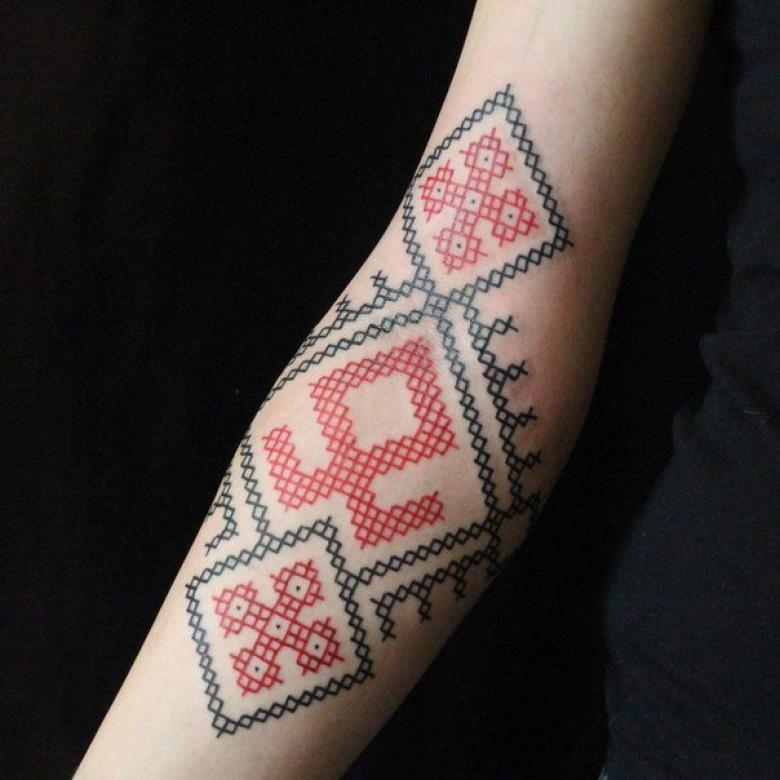
When choosing a tattoo in the Slavic style, in addition to deciding on the type of pattern or ornament is important to find a good salon, which employs competent professionals. It is important to understand that in the process of tattooing there is damage to the skin, so there is a risk of infection by various infections, including dangerous (hepatitis, HIV).

That is why you should avoid cheap salons and artisanal tattooing. In addition, a competent tattoo master will help determine the choice of design and location, can realize almost any of your original idea.

